Symmetry
Symmetry
[syn- together + metron measure]
Reflection Symmetry
The simplest symmetry is Reflection Symmetry (sometimes called Line Symmetry or Mirror Symmetry). It is easy to recognise, because one half is the reflection of the other half.
The Line of Symmetry does not have to be up-down or left-right, it can be in any direction
Rotational Symmetry
With Rotational Symmetry, the image is rotated (around a central point) so that it appears 2 or more times. How many times it appears is called the Order.
Point Symmetry
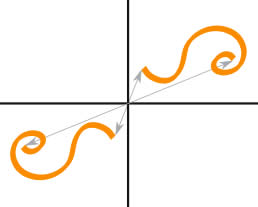 |
Point Symmetry is when every part has a matching part:
- the same distance from the orgin
- but in in the opposite direction.
(Note: this is the same as "Rotational Symmetry of Order 2" above) |
Rotation
|
"Rotation" means turning around a center:
The distance from the center to any point on the shape stays the same.
Every point makes a circle around the center.
|
|
Reflection
Every point is the same distance from the central line !
... and ...
The reflection has the same size as the original image



Fold the Paper
And if all else fails, just fold your sheet of paper along the mirror line and then hold it up to the light !
Resizing

When you re-size a shape it gets bigger or smaller.
|
|
|
|
... but it still looks similar:
|
|
|
|
- all angles stay the same
- relative sizes are the same (for example
the face and body are still in proportion)
- the lines are in proportion.
|
Other people call it dilation, contraction, compression, enlargement or even expansion!
Similar
Two shapes are Similar if the only difference is size
Sometimes it can be hard to see if two shapes are Similar, because
you may need to turn, flip or slide one shape as well as resizing it.
Examples
These shapes are all Similar:
 |
 |
 |
| Resized |
Resized and Reflected |
Resized and Rotated |
Example: What is the missing length here?
|
|
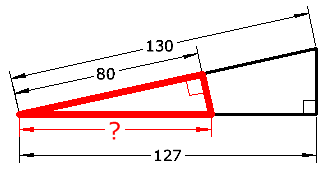 |
Notice that the red triangle has the same angles as the main triangle ...
... they both have one right angle, and a shared angle in the left corner |
|
|
In fact you could flip over the red triangle, rotate it a
little, then resize it and it would fit exactly on top of the main
triangle. So they are similar triangles.
So the line lengths will be in proportion, |
Congruent or Similar?
But when you
don't need to resize to make the shapes the same, they are called
Congruent.
So, if the shapes become the same:
| When you ... |
|
Then the shapes are ... |
| ... only Rotate, Reflect and/or Translate |
 |
Congruent
|
| ... also need to Resize |
 |
Similar
|
Geometry
Geometry is all about shapes and their properties.
Geometry can be divided into:
 |
Plane Geometry is about flat shapes like lines, circles and triangles ... shapes that can be drawn on a piece of paper |
|
|
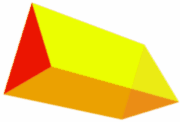 |
Solid Geometry is about three dimensional objects like cubes, prisms and pyramids. |
Interior Angles of Polygons
An Interior Angle is an angle inside a shape.
The General Rule
|
|
|
|
| Shape |
Sides |
Sum of
Interior Angles |
Shape |
Each Angle |
| Any Polygon |
n |
(n-2) × 180° |
 |
(n-2) × 180° / n |
Sum of Interior Angles = (n-2) × 180°
Each Angle (of a Regular Polygon) = (n-2) × 180° / n
Exterior Angles of Polygons
The Exterior Angle is the angle between any side of a shape,
and a line extended from the next side.
The Exterior Angles of a Polygon add up to 360°
|
|
|
|
In other words the exterior angles add up to one full revolution
Think of it this way: the lines change direction and eventually return back to the start.
(Exercise: try this with a square or some odd-shaped polygon)
Note: This rule only works for simple polygons |
See
Transversals
A Transversal is a line that crosses at least two other lines.
The red line is the transversal in each example:
 |
|
Transversal crossing two lines
|
this Transversal crosses two parallel lines |
... and this one cuts across three lines |
Parallel Lines





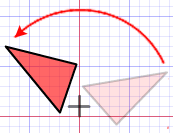
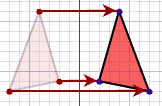









No comments:
Post a Comment